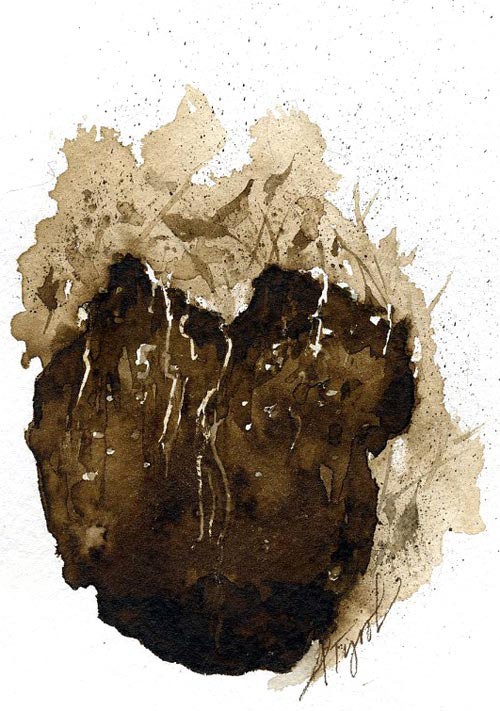
My friend Ed’s a barrel-chested logger who lives in southern Vermont. He’s a tough hombre, as is anyone who makes their living cutting trees. I’ve seen him bull his skidder up vertical inclines with complete disregard for the laws of gravity – inclines that would have made a sane driver wet his pants. The man can fell a 30-inch oak against the lean and hit a soda-can target 10 times out of 10. Tree starts coming down, guys like me scamper down our escape routes; Ed lets loose a sluice of lip tobacco, walks the tree down, and is limbing it before it stops shaking.
Now the flip side of this coin is that he’s scared of bees. And bats. He’s basically scared of the woods. Coyotes. Thunderstorms. Oh, and sinkholes.
A few years ago, Ed was backing up to a hitch of logs on the Taconic mountain range when – lo and behold – the ground gave way beneath his rear skidder tire. He was able to drive out, but when he went back to investigate, he found an enormous hole, maybe 6 feet across and 15 or 20 feet deep.
“I called it a day,” he told me later. “I’ve seen enough movies to know that if the ground starts opening up, you get out of there and you don’t go back.”
That recent awful sinkhole that swallowed a bedroom and a man in Florida leads to the inevitable question of whether such a sinkhole could happen in Vermont or New Hampshire, and, as Ed’s story suggests, the answer is that it’s not impossible in parts of Vermont –though it’s unlikely.
Sinkholes occur in areas that feature “karst terrain” – a geological term that means an area overlying soluble sedimentary rock, such as limestone, dolomite, and marble. According to the U.S. Geological Survey, about 20 percent of the country fits the bill; any area with a solution cave (formed when acidic groundwater dissolves carbonate rocks) is suspect, as caves are sinkholes in the making. And the problem can be exacerbated by human exploitation, as when groundwater pumping disrupts the ground-water fluid pressure. When the groundwater levels fall, the bedrock can fail and the ground sinks.
While no northeastern state is as porous as Florida, there are seams of karst terrain throughout the Taconic Mountains and Champlain Valley. Vermont’s largest congregation of solution caves is found near the Valley of Vermont – a narrow region between the Taconics and Green Mountains – where the hills are full of marble. Well drillers report having their bits drop when they hit underground solution cavities where the water has dissolved the calcium carbonate.
“I doubt that we’ll ever have a sinkhole as big as the one in Florida", said Vermont State Geologist Larry Becker, “but the conditions do exist in places here.”
While most of the karst conditions appear on the western side of the state, the upper Connecticut River Valley (part of what’s called the “Waits River Formation”) contains sandy marble as well as other, harder constituents. Becker said that this makes a sinkhole on the eastern side of the state unlikely, but it’s “not out of the realm of possibility.”
New Hampshire, The Granite State, is more immune to the threat of sinkholes. “There’s a conspicuous absence of carbonate rocks in New Hampshire,” said state geologist Rick Chormann. “Our limestone has all been cooked and compressed over millions of years.”
Chormann said that in New Hampshire the granite bedrock won’t dissolve and certainly won’t collapse, though in theory thick deposits of glacial sand and gravel could subside and create a depression if drained of groundwater. The sinkholes he sees are all small and confined to places where stumps were used as fill in developments; as the wood rots, the ground settles.
“We’re not going to get swallowed up anytime soon,” he said.
I never did find out for sure what caused the sinkhole that Ed almost fell into. It was probably karst-related, but I can’t totally rule out manmade possibilities. The mountain did feature a marble mine in the 1800s, and I wonder if Ed’s hole could have had something to do with that. Perhaps the miners dug the pit and covered it with boards, which allowed tree roots and detritus to form a covering before the boards rotted away.
In any case, Ed’s back in the woods and cutting over on the granite-based Green Mountain range, enjoying the firm ground and that blissful late-winter window before he has to start dealing with those damn bumblebees that buzz through the skidder cage with terrifying regularity.

